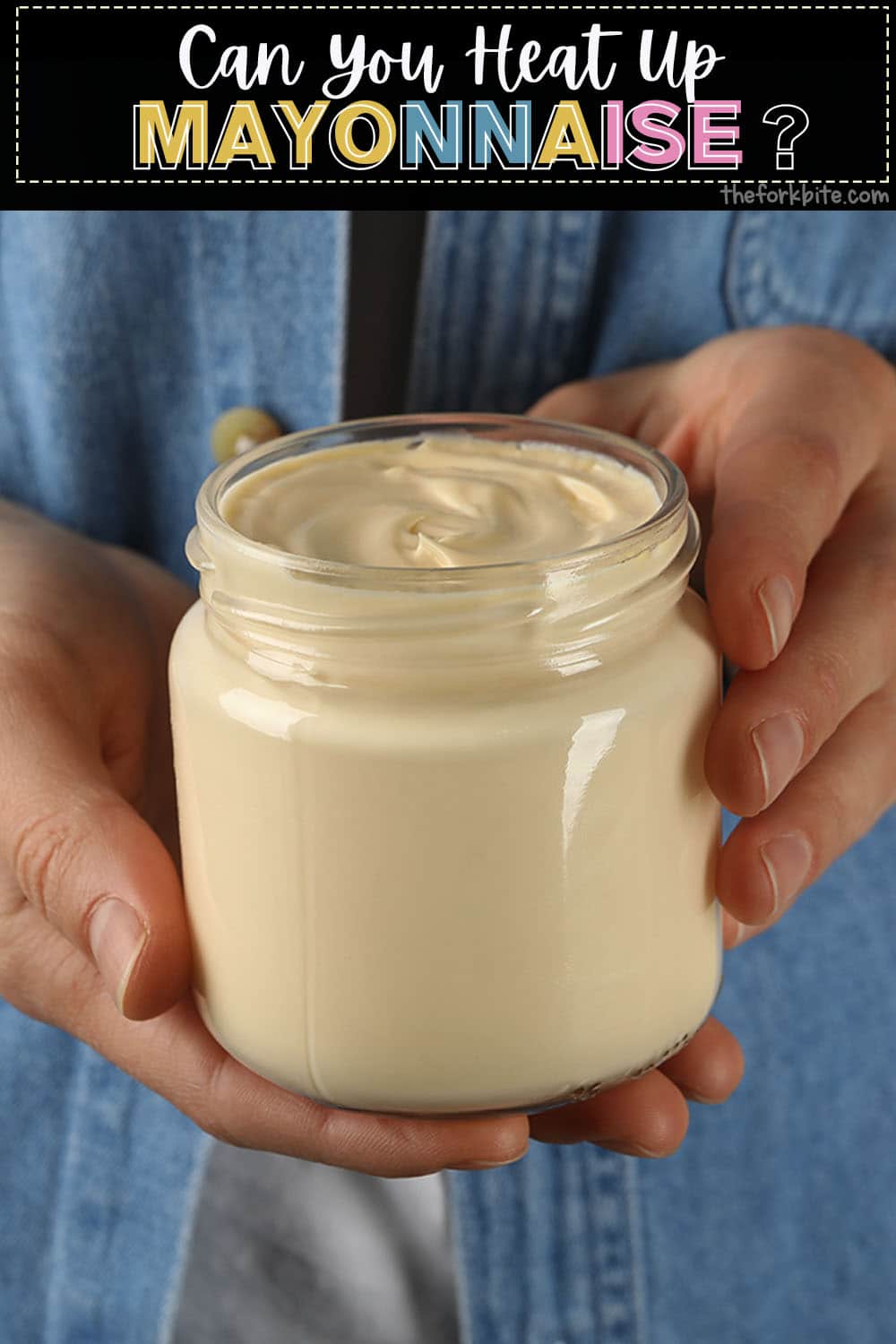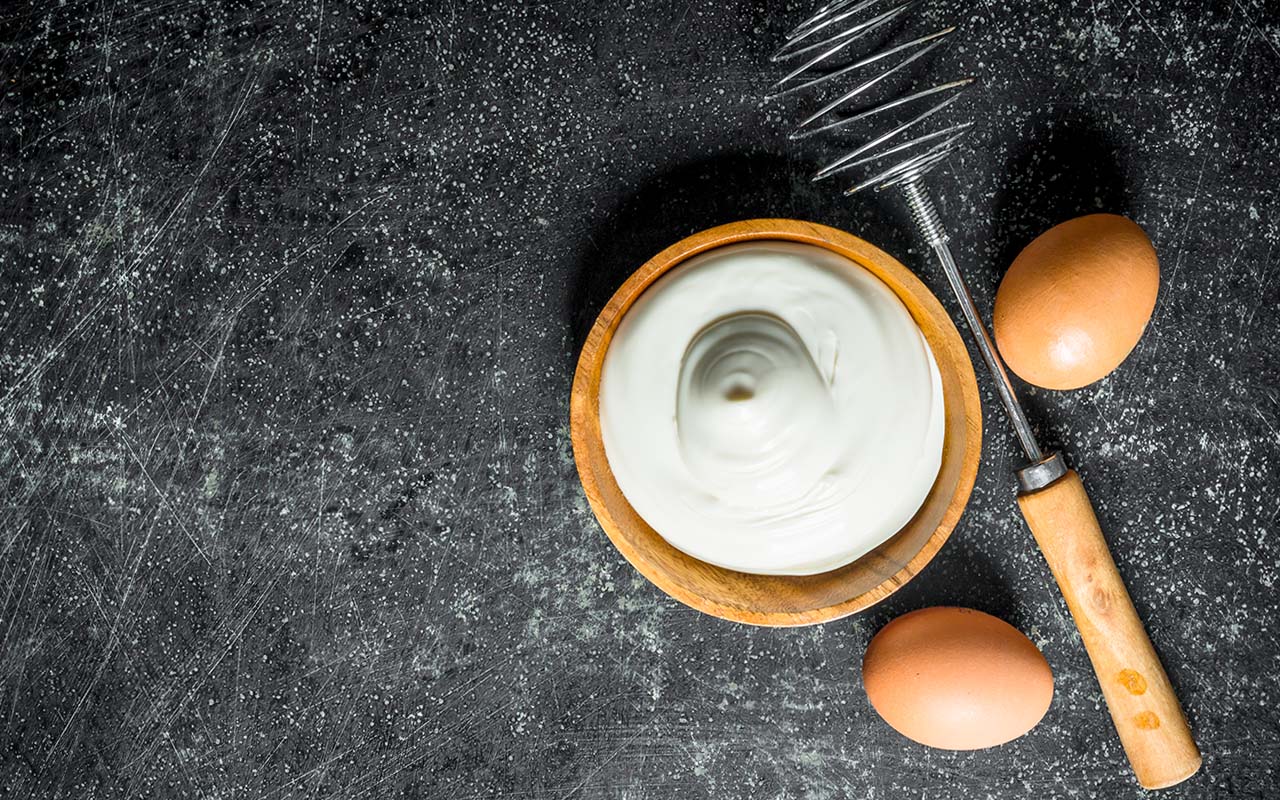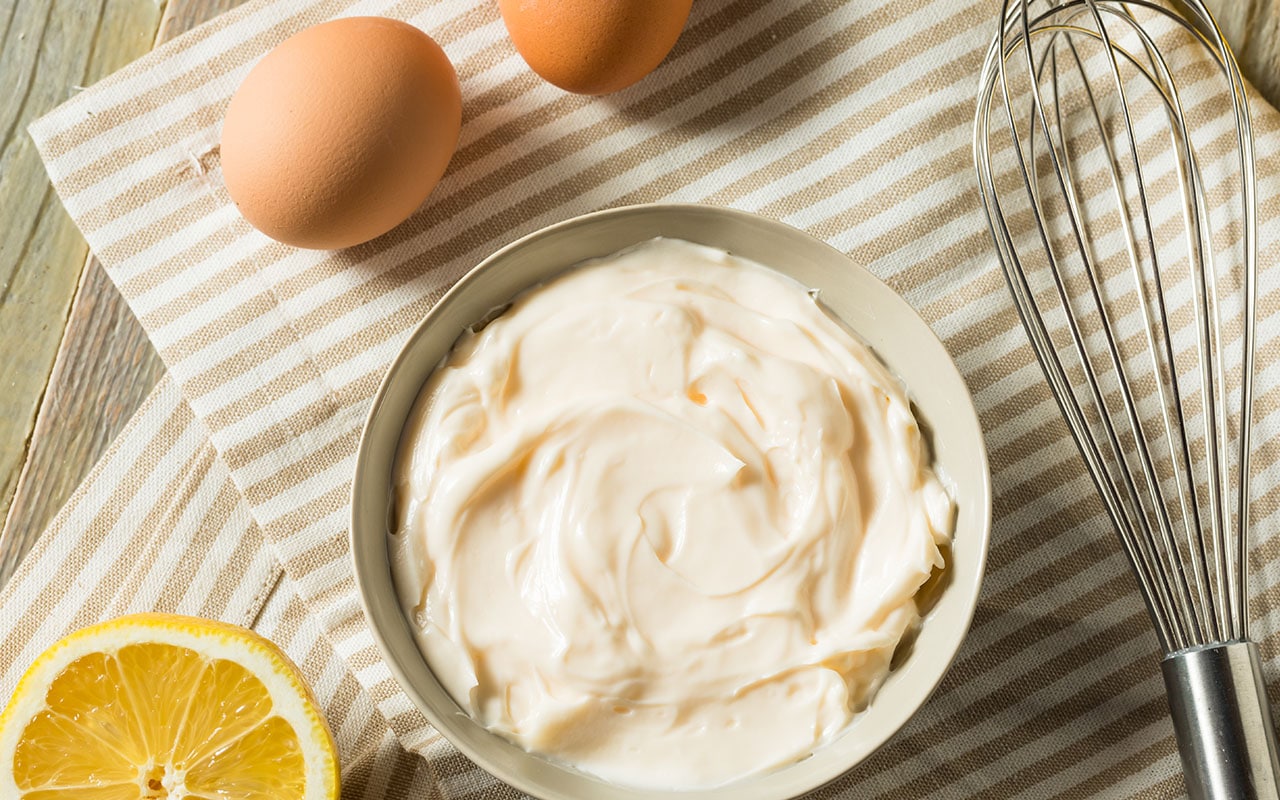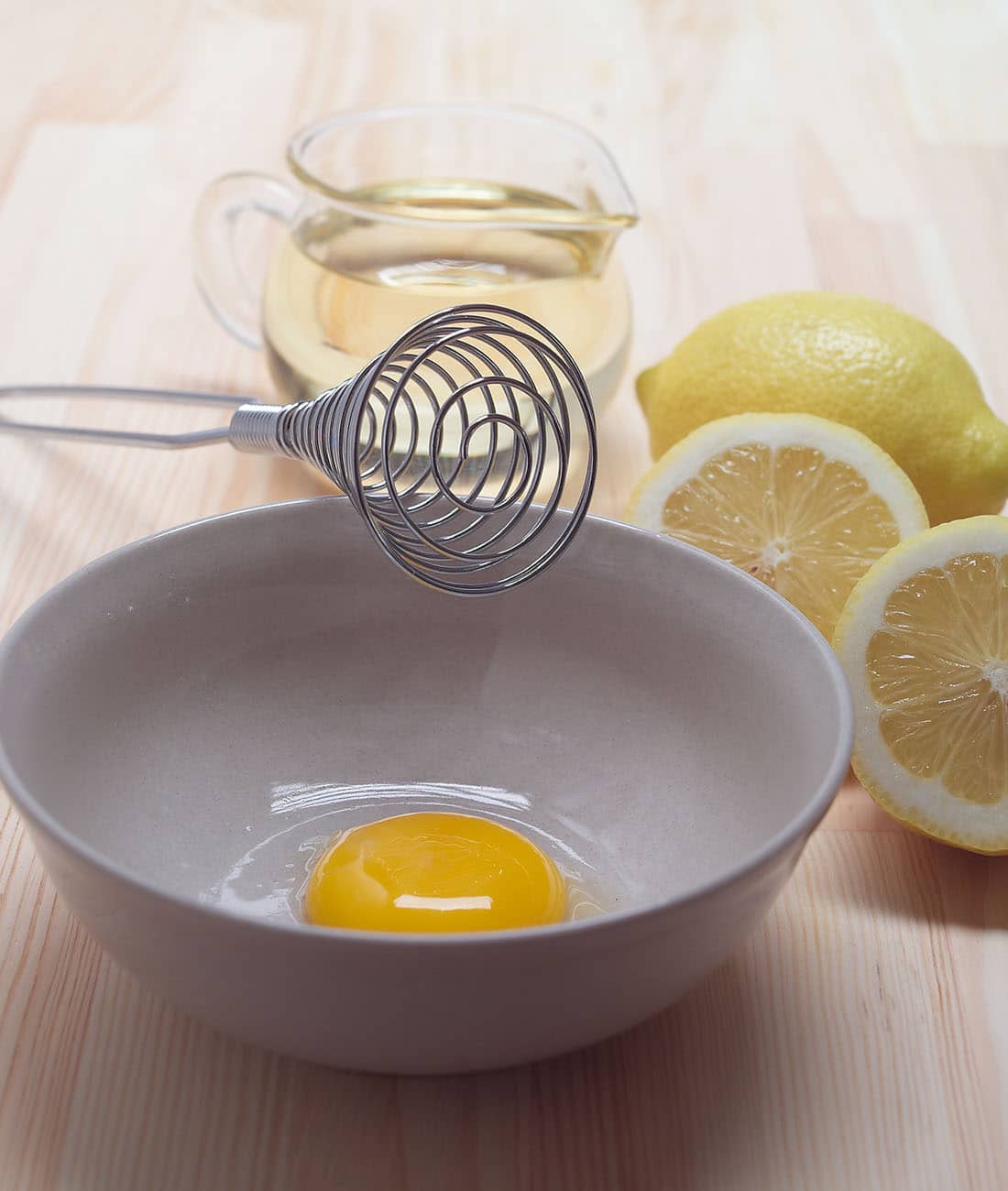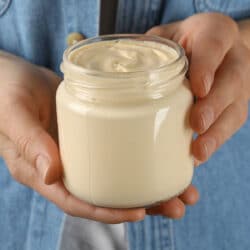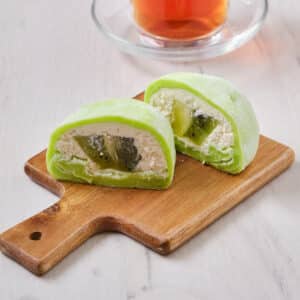Can You Heat Up Mayonnaise? Yes, as long as you warm it on a low, steady heat and make sure not to overheat it, you can warm it successfully.
Mayonnaise is probably the world's favorite condiment. It's certainly one of mine.
Sandwiches simply wouldn't be the same without this gorgeous emulsion of eggs and oil, but you can use it for so much more.
But did you know that you can warm it up too? Many people are not aware that mayo can be heated, and if you are one of these folks, please allow me to lighten your darkness.
It will open a whole new world of culinary delights to you, and I would be proud to be the one to lead the way.
Because Mayonnaise is an oil-based condiment, it is prone to splitting when it is heated. However, as long as you warm it on a low and steady heat and make sure not to overheat it, you can warm it successfully.
Let me tell you more. But first..
The history of mayonnaise
The history of mayo begins back in ancient Egypt when the Egyptians used to eat a mayonnaise-like substance made from eggs and oil. But it was a far cry from the creamy deliciousness we know today.
It was back in 1756 after French forces captured the city of Mahón on Minorca, an island in the Balearics.
Chef Marie-Antoine Carême, the founding father of the notion of "haute cuisine," developed the recipe for emulsifying egg yolks and vegetable oil into the light, fluffy Mayonnaise known and loved today the world over.
The queen of mother sauces
In the 18th century, the French, to whom the world owes so much to the culinary world, developed the concept of "sauces mères," or mother sauces.
Mayonnaise has become one of the famous six alongside:
- Béchamel
- Hollandaise
- Sauce Espagnole
- Tomato Sauce
- Velouté
Mayo vs Hollandaise
Some people confuse Mayo with Hollandaise as they are close culinary cousins. Each is made by slowly mixing egg yolks with veggie oil and lemon juice, but in Hollandaise, butter is added too.
While mayonnaise is perhaps best known for putting into sandwiches, Hollandaise is a favorite for use in making Eggs Benedict, a sauce that is served warm.
It follows that mayo tends to be reserved for cold dishes while Hollandaise gets used to hot. But it doesn't have to be a hard and fast rule.
The basic ingredients for both sauces are:
- Egg Yolks
- Vegetable Oil
- An acidy substance
Mayonnaise uses lemon juice, while Hollandaise uses vinegar instead, plus some butter.
The process of emulsification
With Mayonnaise, other sauces, and vinaigrettes, you will hear the terms emulsion and emulsification used time and time again.
It refers to the mixing and joining together of two or more liquids to form one semistable substance.
With a vinaigrette, the emulsifier is mustard. With Hollandaise, it is egg yolk.
Can you warm up mayonnaise?
Despite what some people might tell you, take it from me (based on my experience). You can heat Mayonnaise without it splitting if you know how to.
Say, for example, that you want to turn mayonnaise into a mock- Hollandaise. The difficulty is because of the egg in the mayo.
It is so easy to cook it, which is exactly what you DON'T want to do.
Step by step instructions
Use a low, even heat and do Not boil.
- Fill pan three-quarters full with water and bring to a simmer. Do not boil.
- Spoon the mayonnaise into a heatproof bowl and position it on top of the simmering water.
- Gently warm the mayo through, stirring all the while.
- When it is as warm as you want it - spoon the now sauce onto the food.
- Gently warming mayo like this makes it runny. The rich, fluffy texture will give way to a smooth, velvety sauce. The taste will still be that of mayo.
But if you want to spruce it up a bit, please feel free to add a little citrus juice, curry powder, or garlic, or whatever other flavor enhancer takes your fancy.
Food safety tip
Some people are concerned about food safety and mayo because it contains eggs. If we are talking about commercial or store-bought Mayonnaise, there is no need to worry at all.
Commercial Mayo that you buy in jars has been pasteurized, and it contains sufficient acid to keep it bacteria-free.
Although store-bought Mayo is okay, you have to take precautions with homemade DIY Mayo. It needs to be heated to a temperature of 160°F.
Use the gentle warming method suggested above and employ an instant-read thermometer to ensure it reaches the right temperature.
You don't want to leave heated mayo out at room temperature for any length of time.
It's best not to let the temperature drop below 140°F before serving and eating, which goes for both shop-bought and homemade Mayonnaise.
What happened when you microwave mayonnaise?
You have to be careful if you're going to microwave Mayonnaise. Because it is an emulsified concoction of egg, oil, and acid, the oil will begin to bubble and separate if you overheat it.
Also, the egg will start to cook, and you will end up with a somewhat oily scrambled egg mess.
If you're looking for a warm sauce with a velvety consistency that feels similar to Mayonnaise in the mouth, you might like to try Hollandaise.
Best way to store a jar of mayonnaise once opened
The fact that store-bought Mayonnaise contains acid and has been pasteurized, as mentioned above, means that it is not essential to rush and store an opened jar of Mayonnaise in your fridge.
However, personally, I think it is best practice to do so.
The rumors about storing mayo
I'm sure you've heard the rumors about the supposed dangers of storing a jar of mayos once it's been opened.
As just mentioned, those rumors are false. Anyone who gets ill after eating a sandwich containing mayo is more likely to be unwell because of cross-contamination from other foods in the sandwich like ham or chicken.
If anything, shop-bought Mayo will help to prevent any bacterial growth.
For store-bought mayo
Once opened, a jar of store-bought Mayonnaise will last anywhere between one and three months if stored in a fridge.
Many people think that Mayonnaise, in terms of storage and shelf life, is similar to other condiments such as ketchup or mustard.
While this is true concerning store-bought Mayonnaise, it is not the case with the homemade variety.
Commercial Mayo will have a "best by" date on the jar. You can use this as a guide, but don't forget that it is "best by" and not "must eat by."
As a rule of thumb, you can keep store-bought mayo once opened in your refrigerator for 2 to 3 months past its "best by" date.
However, the same cannot be said for homemade Mayonnaise.
For homemade Mayonnaise
Depending on how you make your homemade Mayo, it can carry more risk of bacterial growth if not handled correctly.
If made with raw egg yolks that have not been pasteurized, you need to either eat it immediately or refrigerate it, but in the right way.
It is best to making just enough to eat and if there is any leftover, ditch it.
One alternative is to buy irradiated eggs. You'll find these today in most stores.
They carry no risk whatsoever of salmonella contamination, so they are perfectly okay to use raw.
Another alternative is to make a cooked Mayonnaise if you can't get your hands on any irradiated eggs.
Once you've made your homemade mayo, you should be able to store it in your fridge for up to one week. That is, of course, if you made it with un-pasteurized or un-irradiated eggs.
Signs your mayo has gone bad
You now know that Mayonnaise can last quite a while before going bad.
However, eventually, it will begin to deteriorate, and here are the signs for which to look out.
1 Its appearance
The easiest way to tell that your mayo is on the way out is to check what it looks like.
- If it has started to separate and has formed layers on the top or spot liquid pooling in any depressions, this is the first sign it is going off.
- It's a sign that bacterial growth has begun, so whatever you do, don't eat it, throw it in the bin.
When Mayonnaise begins to deteriorate seriously, its color will darken and become more brown than yellow, and you may also see separated oil gathering on the surface.
It's a sure sign that it has gone off and needs to be binned.
2 Unpleasant aroma
Fresh Mayo hardly has any aroma at all. If you notice an acrid or putrid smell coming off your mayo, it is a sure sign it has gone bad. Chuck it into the bin.
3 Unfresh taste
It's always best to carry out a little taste test before using a fridge stored mayo, even though it might look okay in appearance.
As you know, Mayonnaise has a very delicate flavor. If you think the taste has become relatively strong and is in any way unpleasant, it's time to throw it away.
4 The appearance of mold
When Mayonnaise is not stored properly, you will notice mold beginning to grow in the mayo itself or around the inside neck of the jar.
Don't just try and spoon any spots of mold away. Spores could have already spread and may not be noticeable. Keep on the safe side and bin it.
Storage tips
Storing the Mayonnaise correctly is vital to ensure it remains safe to eat for a long time.
You will notice that unopened jars of Mayonnaise stay in a supermarket's stores at ordinary room temperature for many months.
The same can be true when keeping it in your pantry at home as long as you follow a few safety tips.
1 Store in a cool dry place
Proper kitchen pantries are cool and dry, and if you have one or you have storage cupboards with the same characteristics, this is ideal for storing your mayo.
Avoid hot and humid environments and keep your stored mayo well away from your kitchen stove.
It is not absolutely essential to refrigerate mayo once you've opened the jar, although I think it's good practice to do so.
Once opened, you can store it safely in your fridge for up to 3 months.
Remember, when talking about homemade mayonnaise, if it wasn't made with pasteurized or irradiated eggs, the only place you can store it is in your fridge, and then for no more than one week maximum.
Raw egg yolks are highly susceptible to bacteria and can cause food poisoning. Refrigeration is imperative.
If you are one of the people who like to store your mayo in a squeezy bottle, the same recommendations apply.
The only additional point is to clean the top with a dry paper kitchen towel to remove any residue. Don't use a damp towel or cloth as this might cause contamination.
2 Only use clean spoons
When spooning out Mayonnaise, ensure that the spoon is hygienically clean before you use it. If it isn't, it could introduce cross-contamination, which could lead to bacterial and mold growth.
3 Storing in an airtight container
Storing in an airtight container, like the jar in which you originally bought the mayo, is essential when storing mayo in the fridge.
Seal nice and tight after each uses it to ensure that other foods don't contaminate it in the refrigerator.
4 Check the efficiency of your refrigerator
The FDA issues guidelines for safe refrigerating, but did you know that many people simply rely on their refrigerators to keep their contents at the right temperature without checking?
Nowadays, many fridges have inbuilt temperatures with LED displays on the doors so you can keep a check on the temperature inside.
But not all fridges have these inbuilt thermometers, yet it is still important to make sure your fridge is running efficiently and keeping food at the right temperature.
You can check this out easily by installing a refrigerator thermometer.
Can you freeze mayonnaise?
Freezing mayonnaise is not a good idea. If you store mayo at temperatures of 0°F or lower, it will cold amock with its consistency, texture, and thickness as mayonnaise thaws.
Leaving you with the liquid, acidic ingredients, and oil floating on top of the yolk base. Don't try it - not even for a short time.
The best grilled cheese sandwich ever
One of my all-time favorite snacks is a toasted cheese sandwich, but instead of going down the usual route, try this.
- Take two slices of white bread
- Spread half a tablespoon of mayo onto one slice of bread.
- Place the slice of bread, mayo side down, into a pre-heated skillet.
- Put a couple of slices of American cheese and one slice of Pepperjack cheese onto the bread in the skillet.
- Take the remaining slice of bread and cover with half a tablespoon of mayo.
- Place the second slice of bread Mayo side up on top of the cheese.
- Cook the sandwich the 2 ½ minutes, flip over and cook for another 2 ½ minutes until the cheese melts and the bread is a gorgeous golden brown.
- Eat and enjoy.
You won't believe how much the addition of a little mayo can take a simple grilled cheese sandwich to the highest level. Try it. Eating is believing.
The positives of using mayo in your grilled cheese sandwich
- Cooking with butter is excellent, but substituting mayo instead, has some real positives.
- It is so easy to spread - even straight from the fridge. You can apply it in the right quantity, spread it evenly across the surface area of any sandwich, and produce a great grilled sandwich (cheese or otherwise) that's not too oily.
Mayo has a higher melting point than butter. When any oil is heated past its smoking point, it impairs flavor. It's also not that healthy.
If you make homemade mayo for a grilled cheese sandwich, use oil with higher heat tolerance. Instead of olive oil, use canola or soybean oil instead.
Don't overdo the mayo, especially if you're using mild cheese. Gorgeous as Mayonnaise is, it can make the whole thing a little greasy if you add too much. It's definitely a case of less is more.
Brushing grilled foods with mayo
When grilling meat or veggies, swap brushing with oil for brushing with mayo. It adds a whole new dimension.
It's also great to apply a coating of mayo before a rub. It helps the rub to stick and get absorbed for greater flavor. This works well with fish too.
Check this Furikake Salmon recipe where I used mayonnaise as a rub.
Get a little inventive
If you want to add a little zip to its taste, sprinkle a pinch of your favorite herbs or spices into your mayo.
For maximum impact, do it half an hour before use and let it rest to get the flavor to infuse throughout the mayo.
For a lower calorie salad dressing, mix 50% Mayo with 50% natural yogurt. Yummy.
If you don't want the hassle of making your own mayo, or you simply don't have the time, add a little lemon or lime juice or quality wine vinegar into store-bought.
It makes it taste more like homemade, and if no one is watching, only you know your little secret.
Interesting articles
- Can you Freeze Pimento Cheese
- Best Way to Reheat Burrito
- How to Reheat Jambalaya
- How to Reheat an Omelette
Can you Heat Up Mayonnaise (How To)
Pin RecipeEquipments:
- pan
Ingredients:
- mayonnaise
Instructions:
Notes:
- Gently warming mayo like this makes it runny. The rich, fluffy texture will give way to a smooth, velvety sauce. The taste will still be that of mayo.
Please note that all nutrition information are just estimates. Values will vary among brands, so we encourage you to calculate these on your own for most accurate results.

